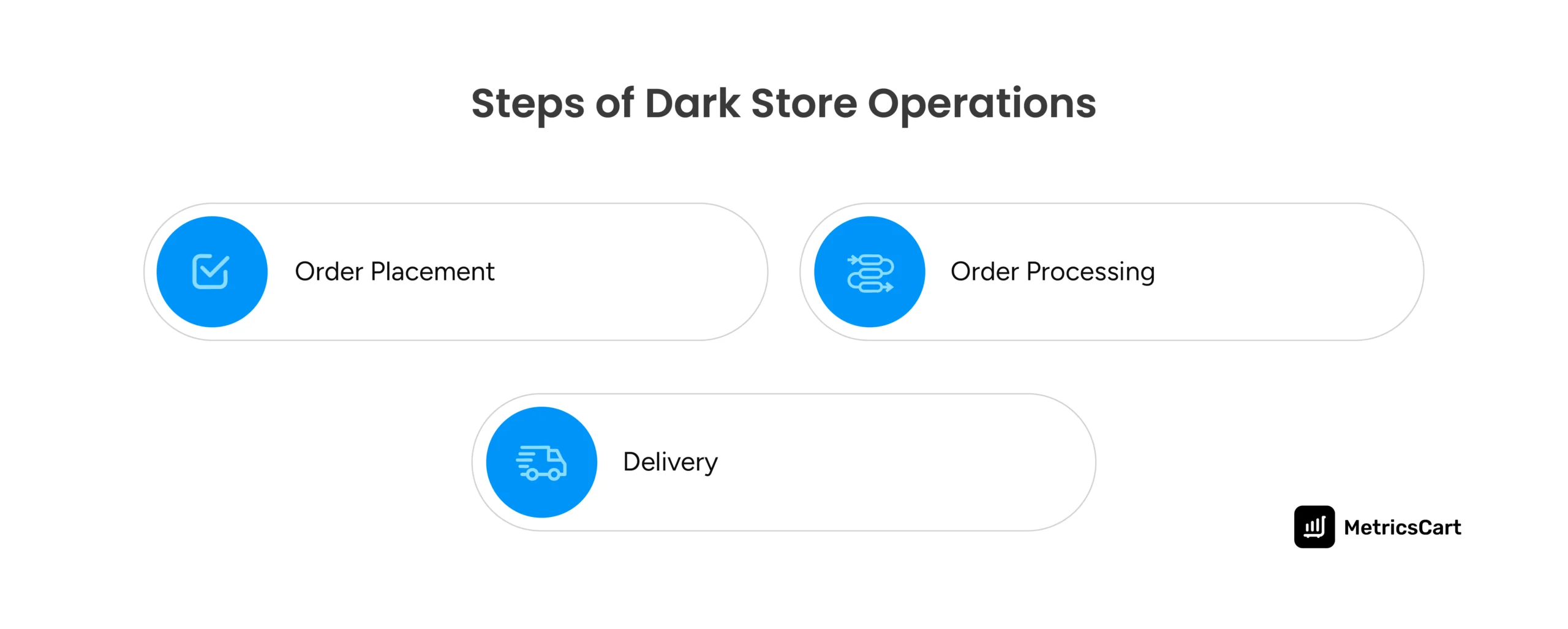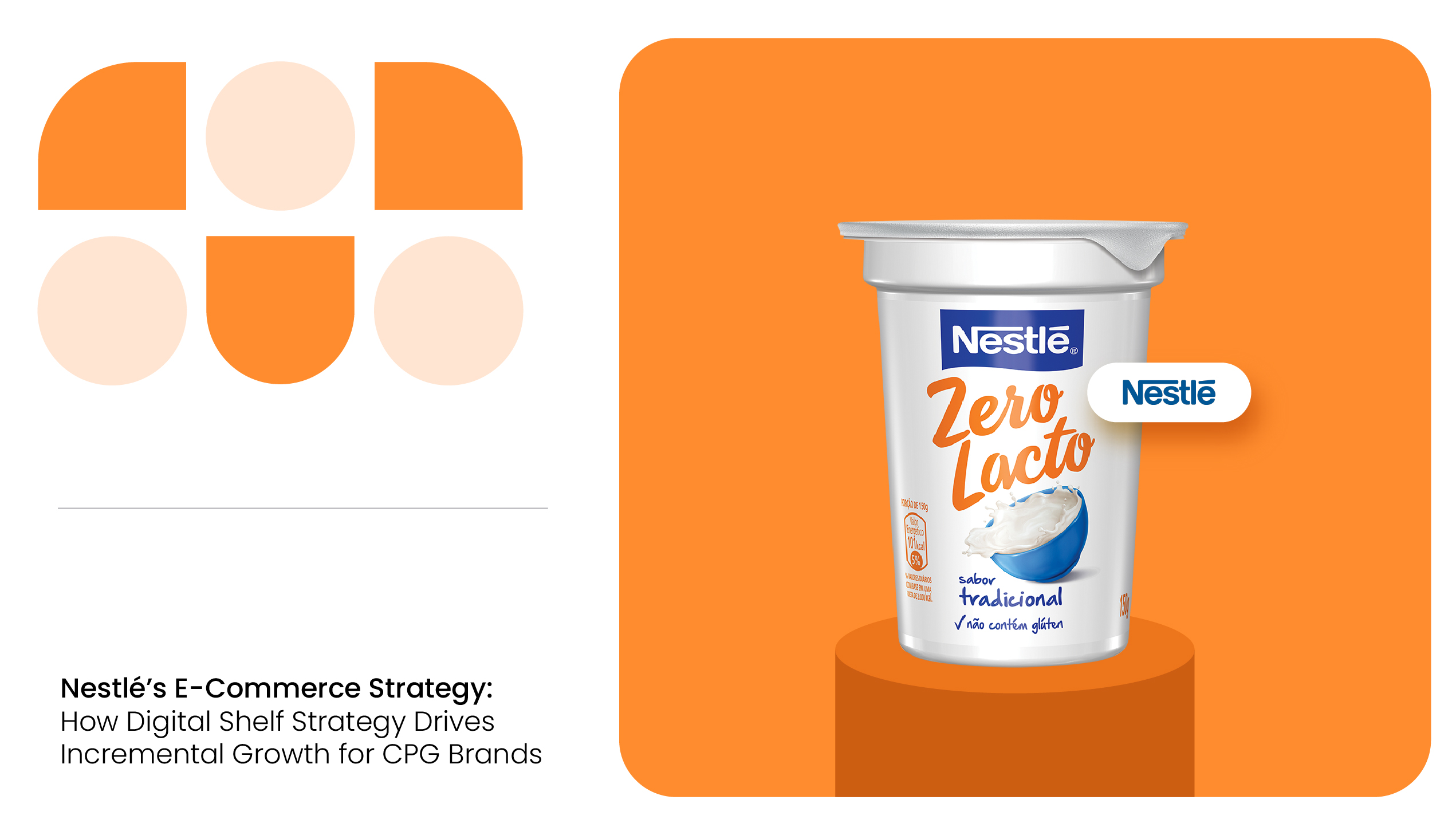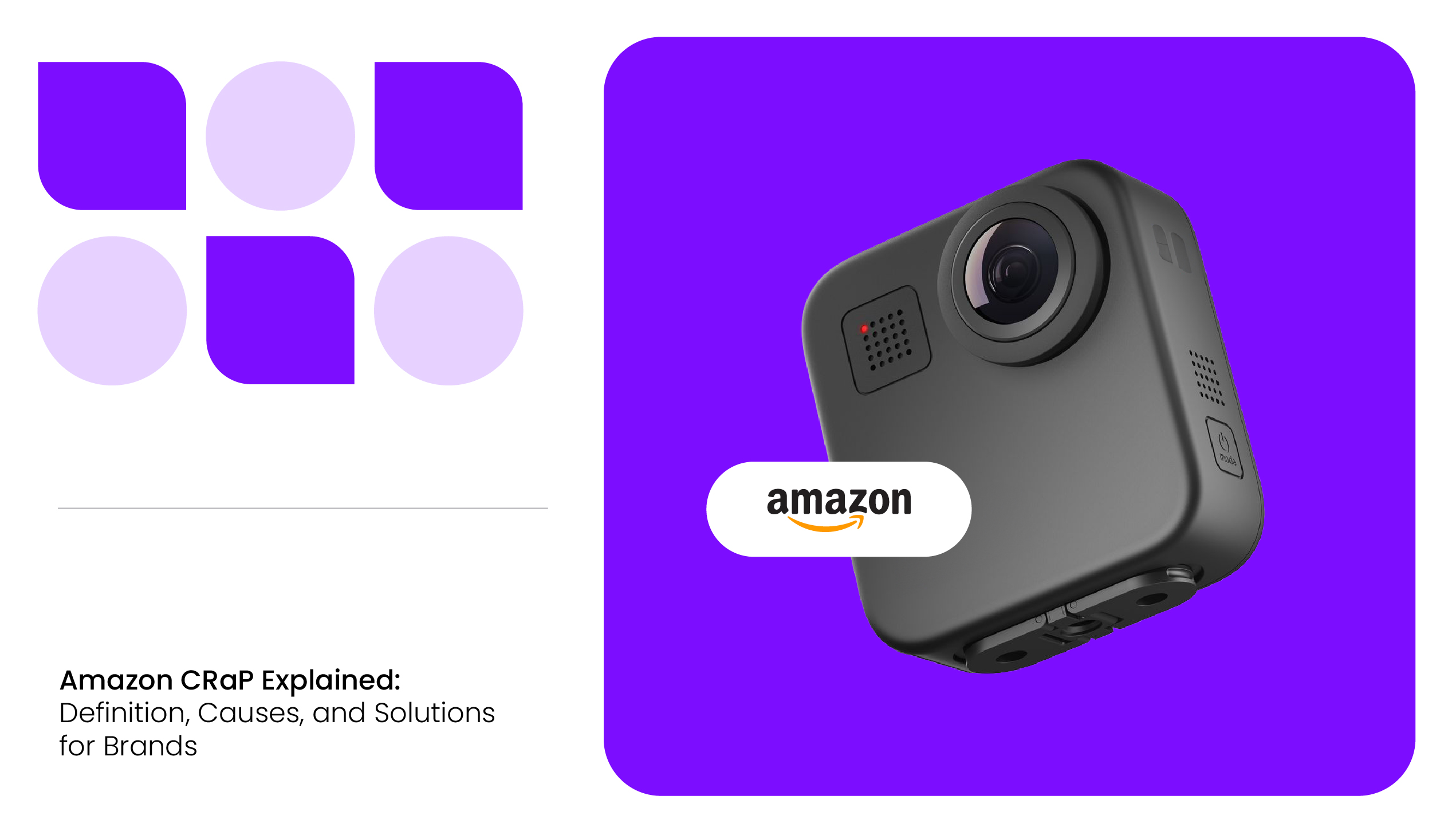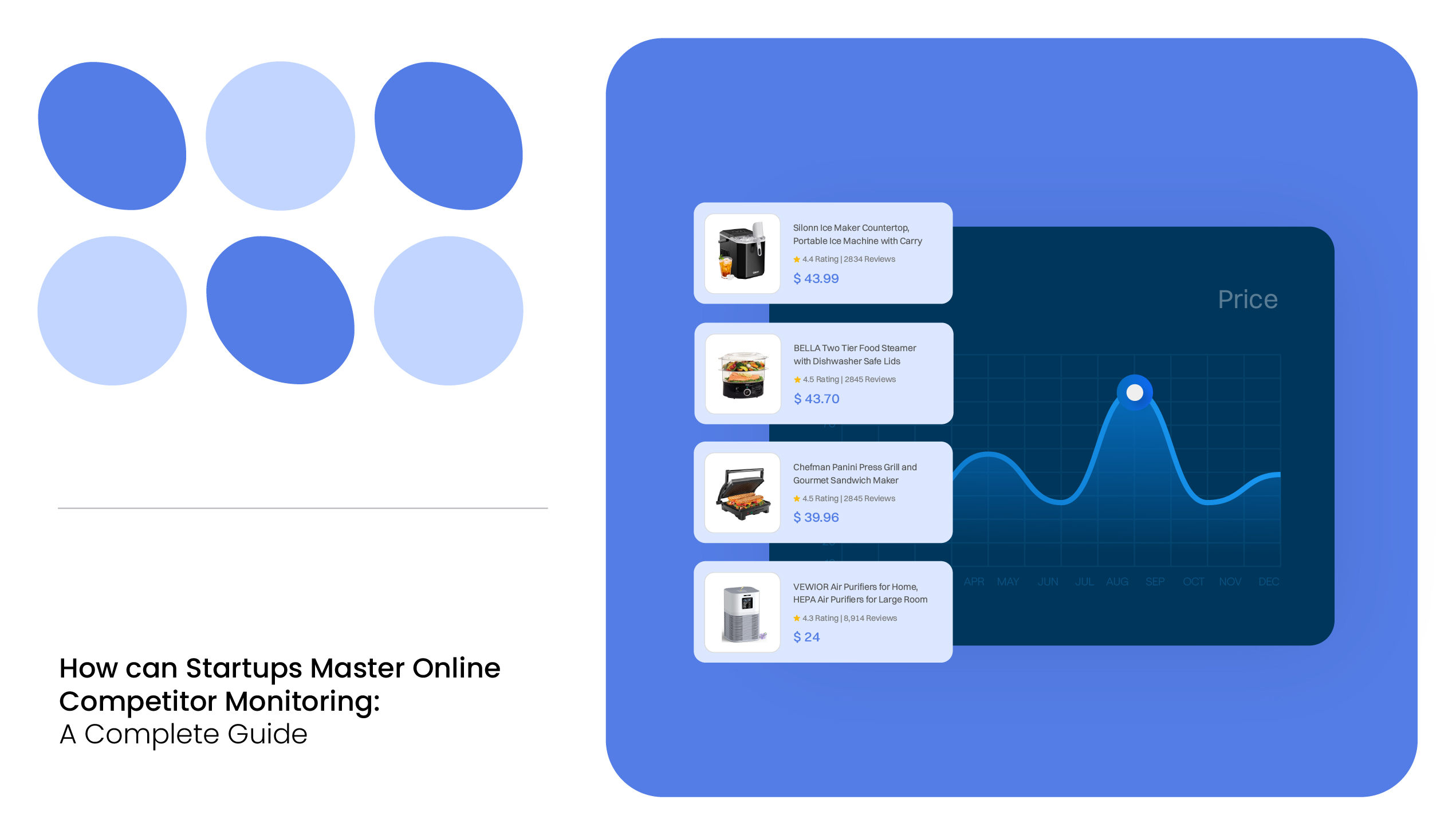Imagine ordering groceries or snacks and having them at your doorstep in minutes. This is the promise of quick commerce, the ultra-fast delivery model used by startups like Zepto in India and Gopuff in the US, which offer essentials delivered in under 15 minutes.
But what makes such speed possible? The secret lies in dark store operations, which are often called the backbone of quick commerce.
Dark stores are local fulfillment centers that are closed to the public and dedicated solely to online orders. Companies leverage these dark stores to prepare and dispatch orders at lightning speed, making 10-to-30-minute deliveries feasible.
Dark Store Operations: Infrastructure, Fulfillment, & Technology
Dark store operations refer to managing these special fulfillment centers that power quick commerce. Inside a dark store, everything is optimized for speed and accuracy rather than browsing. Here’s a look at the key aspects of operating a dark store:
Location & Infrastructure
Dark stores are retail-like facilities set up by quick commerce (QC) platforms to fulfil online delivery orders. Spanning around 2,500–4,000 sq. ft., these stores are optimized for storage and quick picking of items.
They are strategically located in areas near high population densities and affluent neighborhoods, often in back alleys or commercial complexes. Each dark store serves a delivery radius of 2–3 km, and locations are chosen using a data-driven approach considering household count, income levels, infrastructure, traffic, and expected demand.
These dark stores are supported by large centralized warehouses known as “mother warehouses,” typically located on the city outskirts. A single mother warehouse, spanning 20,000–175,000 sq. ft., supports 30–40 dark stores. All inventory from brands or distributors first arrives at these warehouses before being redistributed to dark stores once or twice daily.
These warehouses include dedicated zones for dry and cold storage, and may even be segmented by product category (e.g., F&V, meat, staples). Sometimes, third-party (3P) logistics providers manage replenishment operations.
READ MORE | Want to Know the Top Quick Commerce Players in US? Check out How Quick Commerce is Evolving: 10 Key Players in 2025
Inventory & Fulfillment
Dark stores are designed for maximum efficiency. Each store stocks over 6,000 SKUs across diverse categories. Since there are no in-store customers, layouts are optimized to increase storage density and picker speed. Items are arranged for minimal movement during order picking.
Perishables and fresh items are restocked multiple times a day, while non-perishables are restocked once daily. Platforms also practice dynamic assortment adjustments, for instance, removing fresh meat during festive seasons and introducing festival-related goods instead. This ensures the relevance and freshness of offerings at all times.
Goods are organized in a hyper-efficient way (for example, popular items at eye level and grouped by category) to minimize the time employees (called pickers) spend finding them.
Some advanced dark stores even use automation, like robotic picking systems or conveyor belts, to speed up fulfillment further. However, many rely on well-trained humans with hand-held devices that guide them through the optimal picking route.
Technology
Modern technology is at the heart of effective dark store operations. Each dark store uses inventory management software that tracks stock levels in real time and ensures popular products are always replenished and available.
Digital systems coordinate incoming orders, direct them to the appropriate location, and might even suggest the best picking sequence to minimize delays. On average, an order includes six SKUs and is picked, packed, and billed within 1.5 minutes.
Meanwhile, the delivery partner is assigned and navigated via real-time traffic routing tools. This system enables highly efficient order fulfilment and accurate estimated delivery times.
Companies analyze data to predict which items will be ordered most in each neighborhood (for example, more coffee in the mornings, or ice cream on hot days) and stock their dark stores accordingly.
Demand forecasting prevents stockouts and keeps operations smooth. In summary, technology helps operate a dark store with precision, from scanning items during packing to updating customers about their delivery status in real time.
Why Do Dark Stores Matter in Quick Commerce?
Here’s why dark store operations matter so much for rapid delivery platforms:
Enables Ultra-Fast Delivery
Since dark stores are located near customers and are dedicated solely to online orders, they eliminate many delays of traditional fulfillment. Orders can be prepared and dispatched within minutes, right in the neighborhood. Thus, these micro-fulfillment centers help meet 10 to 30-minute delivery goals.
Inventory Control & Reliability
Quick-commerce companies usually own and manage their inventory in dark stores rather than shopping on your behalf at a third-party store. For example, Zepto’s business model is ” inventory-led,” where they source products directly and stock them in their dark stores.
This way, it maintains tight control from procurement to delivery, ensuring quality and reducing the chance of an item being unavailable. This level of control leads to a more reliable service, and customers experience fewer substitutions or cancellations.
Operational Efficiency
Dark store operations are designed for efficiency, which can lower per-order fulfillment costs. With no in-store customers, every square foot can be used for storage or work areas, and staff can focus entirely on picking and packing. This means orders are processed faster and often with less labor than in a regular supermarket environment.
Gopuff, for instance, attributes its consistent 30-minute delivery times to its network of managed micro-fulfillment centers and control over logistics. By eliminating the inefficiencies of traditional retail, such as checkout lines or finding parking, dark stores let companies fulfill more orders in less time.
Better Customer Experience
The combination of speed and reliability drives customer satisfaction and loyalty. Instead of weekly stock-up trips, people can order on demand and receive it immediately. Quick commerce players differentiate themselves from traditional e-commerce by this immediacy, and dark stores are the infrastructure making it possible.

How Do Dark Stores Work?
Dark store operations can be broken down into three main steps: order placement, order processing, and delivery. Let’s walk through each part of the process:

Order Placement
Everything begins with the customer placing an order through a mobile app or website. The app shows products available in the user’s area (based on their PIN code or GPS location), which correspond to nearby dark stores.
Once the customer confirms their cart and payment, the system instantly routes the order to the appropriate dark store. Typically, this will be the closest dark store that serves the customer’s neighborhood and has all the items in stock. Modern quick commerce platforms use algorithms to direct the order to the nearest dark store for fulfillment.
Almost immediately, the chosen dark store receives the order details on its internal dashboard. A timer starts ticking because these companies aim to have the order out the door in just minutes. Inside the dark store, a notification or loud alert will inform staff that a new order has come in.
The order lists each item and the quantities needed. The dark store team now springs into action to pick and pack the order.
Order Processing (Picking & Packing)
As soon as the order is received, one or more pickers (staff members) are assigned to gather the items. They typically use a handheld device or smartphone that displays the order and possibly an optimized path through the store.
The store’s layout is designed so that pickers can move quickly: items are arranged in logical sections, and high-demand products are placed for easy grabbing. This means the picker doesn’t have to wander all over; the system might guide them shelf by shelf in a sequence that avoids backtracking.
In a well-run dark store, this picking process is often under 2 minutes for a small basket of items. Zepto has reported that their staff can locate and pick all items, then pack them, in about 60 seconds on average.
Once all items are picked, they are put into a bag or box at a packing station. The packer double-checks the order for accuracy. The goal is to have the order ready for dispatch within just a couple of minutes after placement. In many cases, by the time the next step (delivery driver pickup) is arranged, the order is already packaged and ready to go.
Delivery
While the order is being packed, the system alerts a delivery driver. Quick commerce companies either have their fleet of drivers or partner with delivery services. The driver who is closest to the dark store or who is assigned to that zone will get a notification on their rider app.
The driver immediately heads to the dark store, where the staff hands off the bag of goods. Since dark stores cater to small local areas, delivery distances are short, often just a mile or two.
A short distance means the driver can zip to the customer quickly, usually by scooter, bike, or car. For instance, Zepto has dark stores that are spaced so that the average delivery distance is about 1.8 km (a little over a mile). This proximity allows their drivers to reach customers routinely in under 10 minutes.
To maintain these speeds, the driver may deliver one order at a time rather than bundling multiple orders (batching is rare in instant delivery promises). Customers can usually track the driver’s journey on the app in real time. Upon arrival, the driver hands off the order to the customer, completing the cycle.
READ MORE | Wondering Who Is Winning India’s Q-Commerce Game? Check out Speedy Deliveries: Top Quick Commerce Players in India
Conclusion
Dark stores are essential for quick commerce, enabling ultra-fast deliveries by focusing on efficient, localized fulfillment. By leveraging strategically placed micro-fulfillment centers, companies like Zepto and Gopuff meet the rising demand for rapid delivery.
As the quick commerce industry continues to grow, dark store operations will remain a key factor in shaping the future of retail.
Quick commerce intelligence platforms like MetricsCart are crucial in optimizing these operations. They provide valuable insights into product trends, pricing, and consumer behavior to help brands stay competitive in this fast-paced market.
Drive Faster Growth with Smarter Quick Commerce Intelligence.
FAQs
A dark store is essentially a retail store or supermarket that is not open to the public. Instead, it functions as a warehouse or fulfillment center for online orders. In other words, it’s a store that shoppers cannot enter; its aisles and shelves are only used by staff (or sometimes robots) to pick items for delivery or pickup.
Dark stores share some features with retail stores and warehouses, but they are a unique hybrid designed for quick service. Unlike a traditional supermarket or convenience store, dark stores do not have in-person shoppers.
Companies turn to dark stores because they dramatically improve the speed and reliability of service for online orders. In a regular store, pickers would have to navigate around customers, and stock on the shelves meant for shoppers would be limited. Dark stores eliminate those problems by providing a controlled environment.
While dark stores enable impressive delivery speeds, they come with their own set of challenges, including high operating costs, inventory management, logistics, and staffing.
Dark stores have quickly become integral to the quick commerce model. As companies refine the model and improve profitability, dark stores (or micro-fulfillment centers) are likely to become a common element in retail supply chains.







